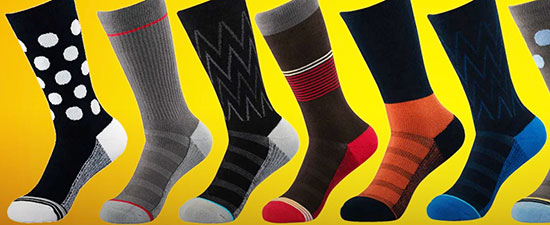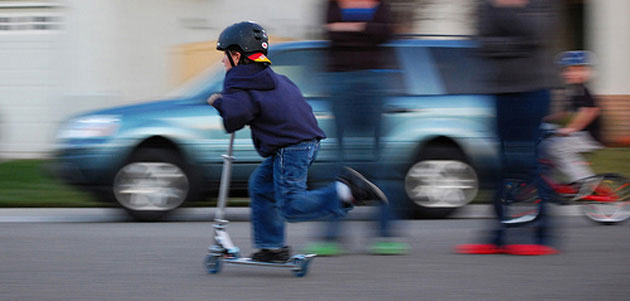- Home
- Foot & Ankle Conditions
- Less Common Conditions
- Peroneal Tendon Injuries
Peroneal Tendon Tear and Dysfunction
- Published 11/1/2023
- Last Reviewed 2/19/2024
In this video, we discuss peroneal tendon injuries and their treatment options.
It can be difficult to distinguish one ankle injury from another. Thankfully, our foot and ankle specialists and orthopedic surgeons are trained trauma experts and have decades of extensive experience in treating ankle tendon injuries, including peroneal tendon injuries. In fact, University Foot & Ankle Institute’s foot and ankle specialists often teach our peroneal tendon repair techniques to other doctors and clinics.
A peroneal tendon tear is when one or both of the bands of tissue in your ankle — the peroneal brevis and peroneal longus — tear as a result of injury or overuse. There are a few different types of tears, and each can vary in level of severity, making it important to receive adequate diagnosis and proper treatment.
- Previous
- Condition
-
Foot and Ankle Surgeon at University Foot and Ankle Institute
Dr. Abimbola Johnson completed his undergraduate degree at Loyola University Chicago, where he played Division II rugby and was also involved in social justice clubs aimed at helping younger students prepare for college.
Upon graduation, he entered Scholl College of Podiatric Medicine, where he served as president of the practice management club and volunteered as coordinator at the Free Foot Clinic in Chicago. He served his residency at Regions Hospital/Health Partners in St. Paul.
Dr. Johnson provides comprehensive medical and surgical care for a wide spectrum of foot and ankle conditions, including common and complex disorders and injuries. The doctor is uniquely qualified to detect the early stages of disease that exhibit warning signs in the lower extremities, such as diabetes, arthritis, and cardiovascular disease.
Dr. Johnson can be seen at our Santa Barbara location
 Dr. Baravarian and his staff were very helpful and extremely courteous. Impressive practiceHolly C.
Dr. Baravarian and his staff were very helpful and extremely courteous. Impressive practiceHolly C. I liked it.Liisa L.
I liked it.Liisa L. I depend on the doctors at UFAI to provide cutting edge treatments. Twice, I have traveled from Tucson, Arizona to get the car...Jean S.
I depend on the doctors at UFAI to provide cutting edge treatments. Twice, I have traveled from Tucson, Arizona to get the car...Jean S. They helped me in an emergency situation. Will go in for consultation with a Dr H????
They helped me in an emergency situation. Will go in for consultation with a Dr H????
Re foot durgeryYvonne S. It went very smoothly.Maria S.
It went very smoothly.Maria S. My experience at the clinic was wonderful. Everybody was super nice and basically on time. Love Dr. Bavarian and also love the ...Lynn B.
My experience at the clinic was wonderful. Everybody was super nice and basically on time. Love Dr. Bavarian and also love the ...Lynn B. I fill I got the best service there is thank youJames G.
I fill I got the best service there is thank youJames G. My experience with your practice far exceeded any of my expectations! The staff was always friendly, positive and informative. ...Christy M.
My experience with your practice far exceeded any of my expectations! The staff was always friendly, positive and informative. ...Christy M. Love Dr. Johnson.Emily C.
Love Dr. Johnson.Emily C. After seeing Dr. Baravarian for the last 6 months due to chronic plantar fasciitis I am finally able to run again. The staff an...Sarah L.
After seeing Dr. Baravarian for the last 6 months due to chronic plantar fasciitis I am finally able to run again. The staff an...Sarah L. I am a new patient and felt very comfortable from the moment I arrived to the end of my visit/appointment.Timothy L.
I am a new patient and felt very comfortable from the moment I arrived to the end of my visit/appointment.Timothy L. I always receive the best care from Dr Franson and his staff!Diane M.
I always receive the best care from Dr Franson and his staff!Diane M.
-
 Listen Now
Have Heel and Knee Pain? It Could Be the Way You Walk
Read More
Listen Now
Have Heel and Knee Pain? It Could Be the Way You Walk
Read More
-
 Listen Now
Can Plantar Fasciitis Socks Relieve Foot Pain?
Read More
Listen Now
Can Plantar Fasciitis Socks Relieve Foot Pain?
Read More
-
 FDA Warns of Serious Risks from Antibiotics to Tendons, Muscle & Joints
Read More
FDA Warns of Serious Risks from Antibiotics to Tendons, Muscle & Joints
Read More
-
 Listen Now
Toy Scooter Related Injuries: what you need to you know
Read More
Listen Now
Toy Scooter Related Injuries: what you need to you know
Read More
-
 Listen Now
What's Plantar Tendonitis and Why is it Still a "Medical Mystery"?
Read More
Listen Now
What's Plantar Tendonitis and Why is it Still a "Medical Mystery"?
Read More
-
 Listen Now
Common Prescriptions and OTC Medications That Affect Your Feet and Certain Foot and Ankle Conditions
Read More
Listen Now
Common Prescriptions and OTC Medications That Affect Your Feet and Certain Foot and Ankle Conditions
Read More








